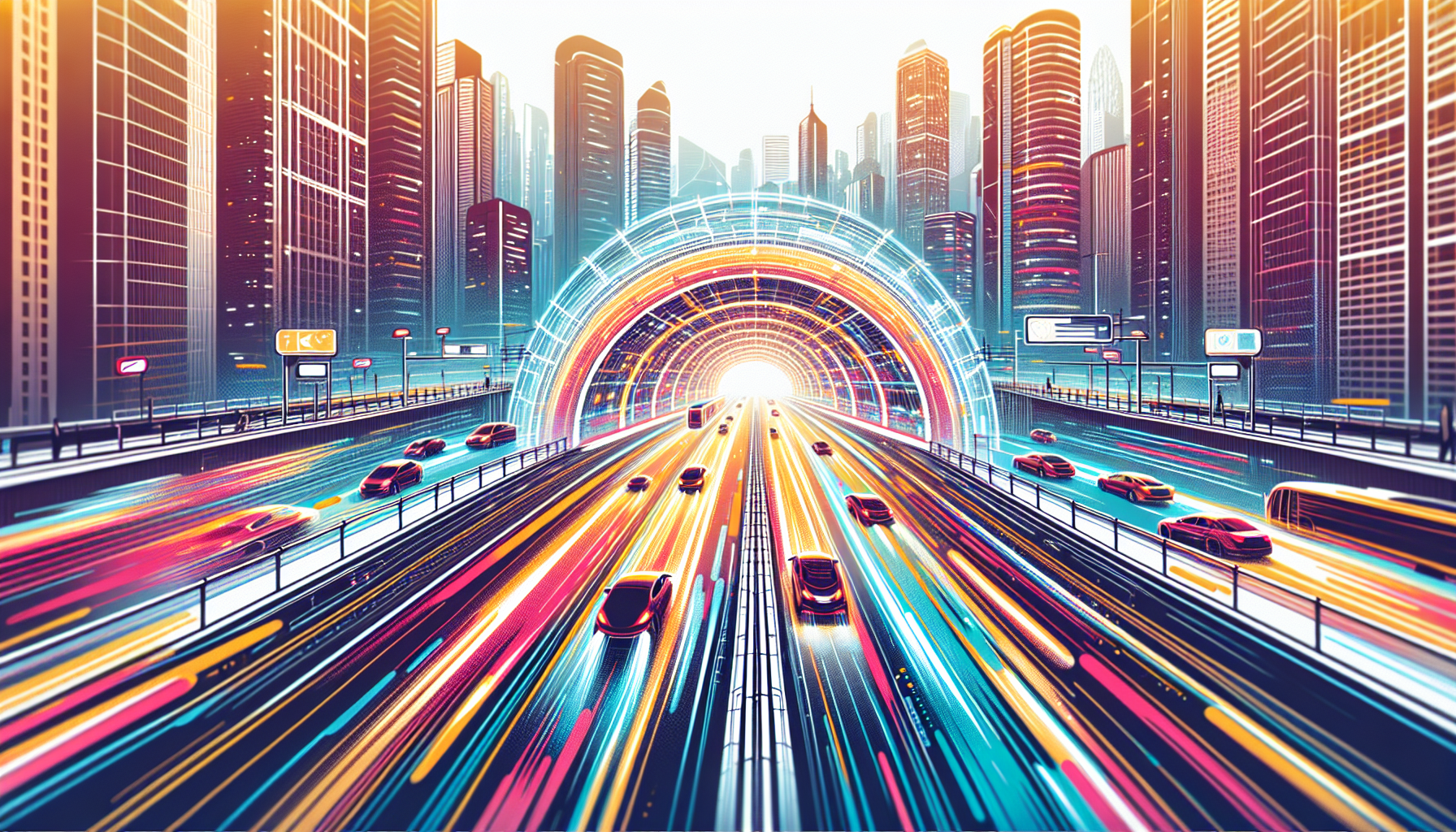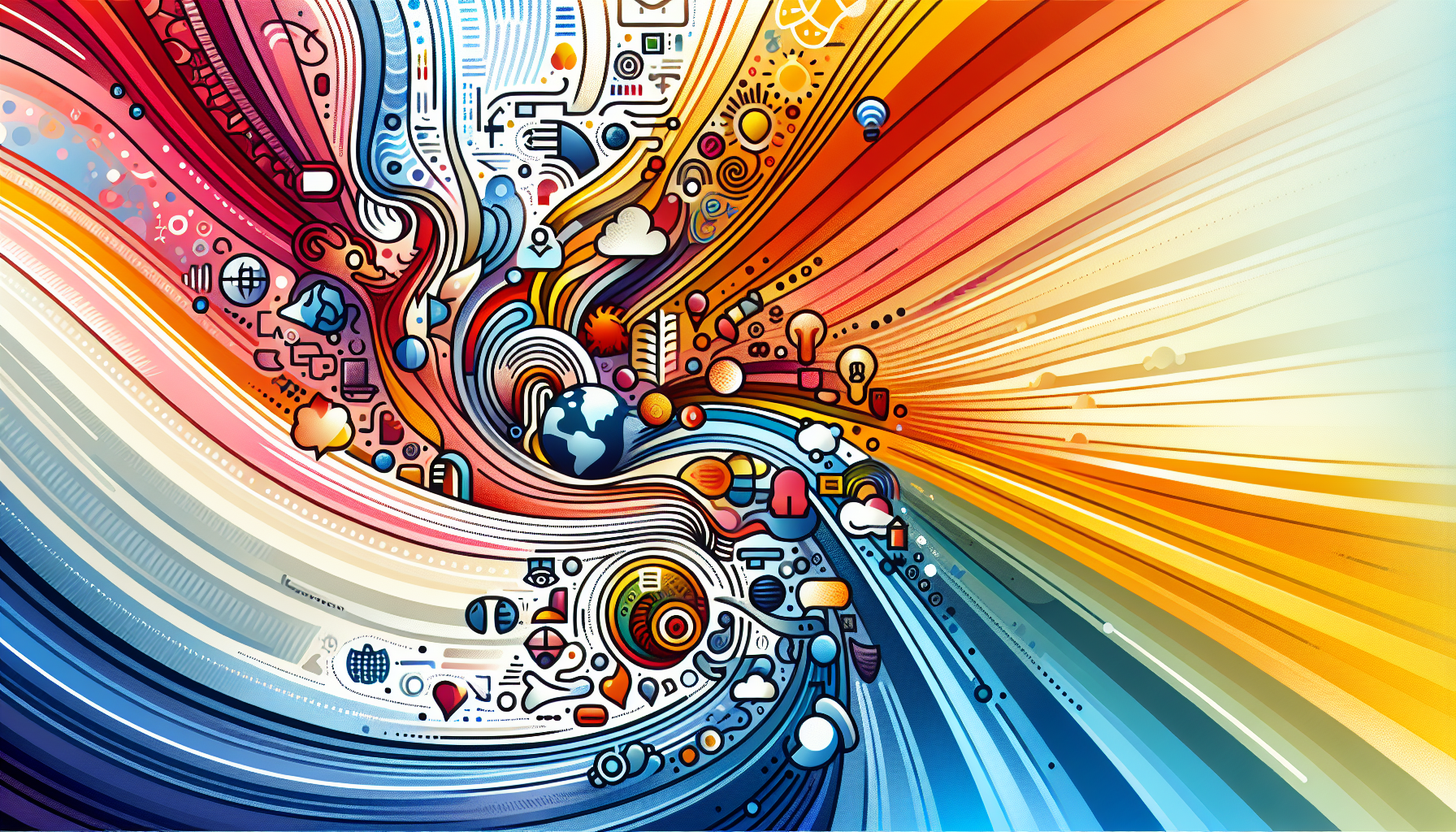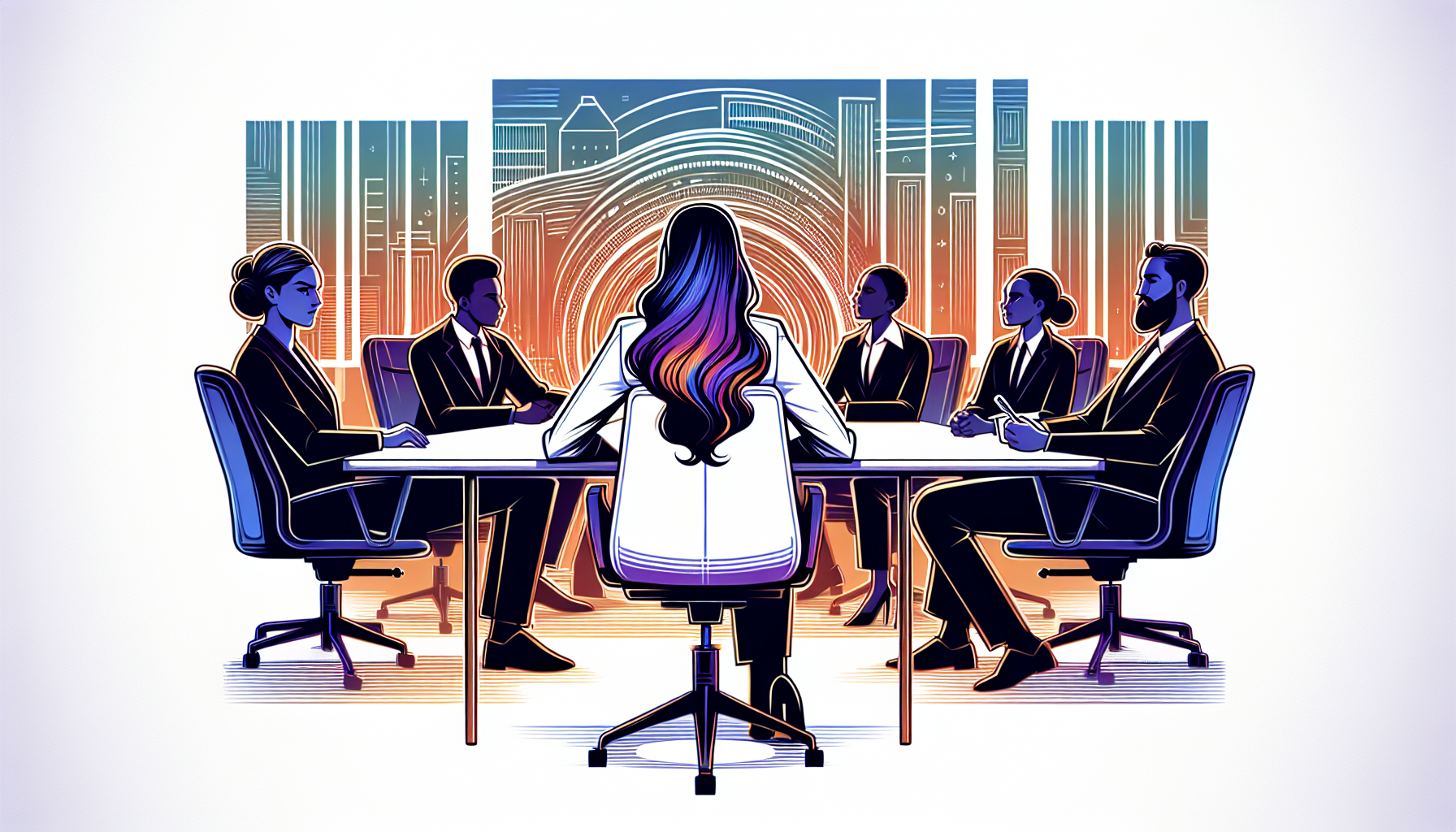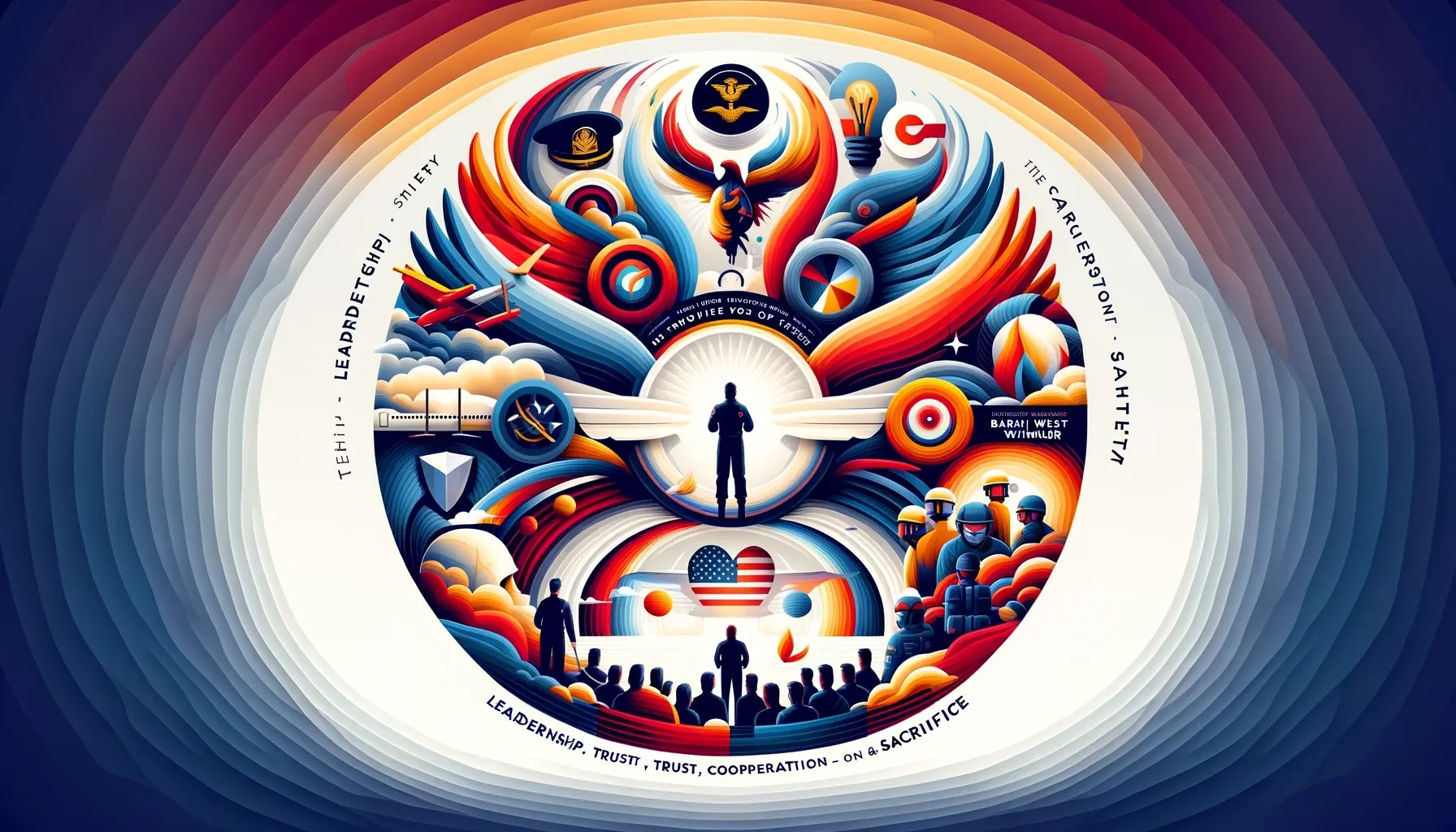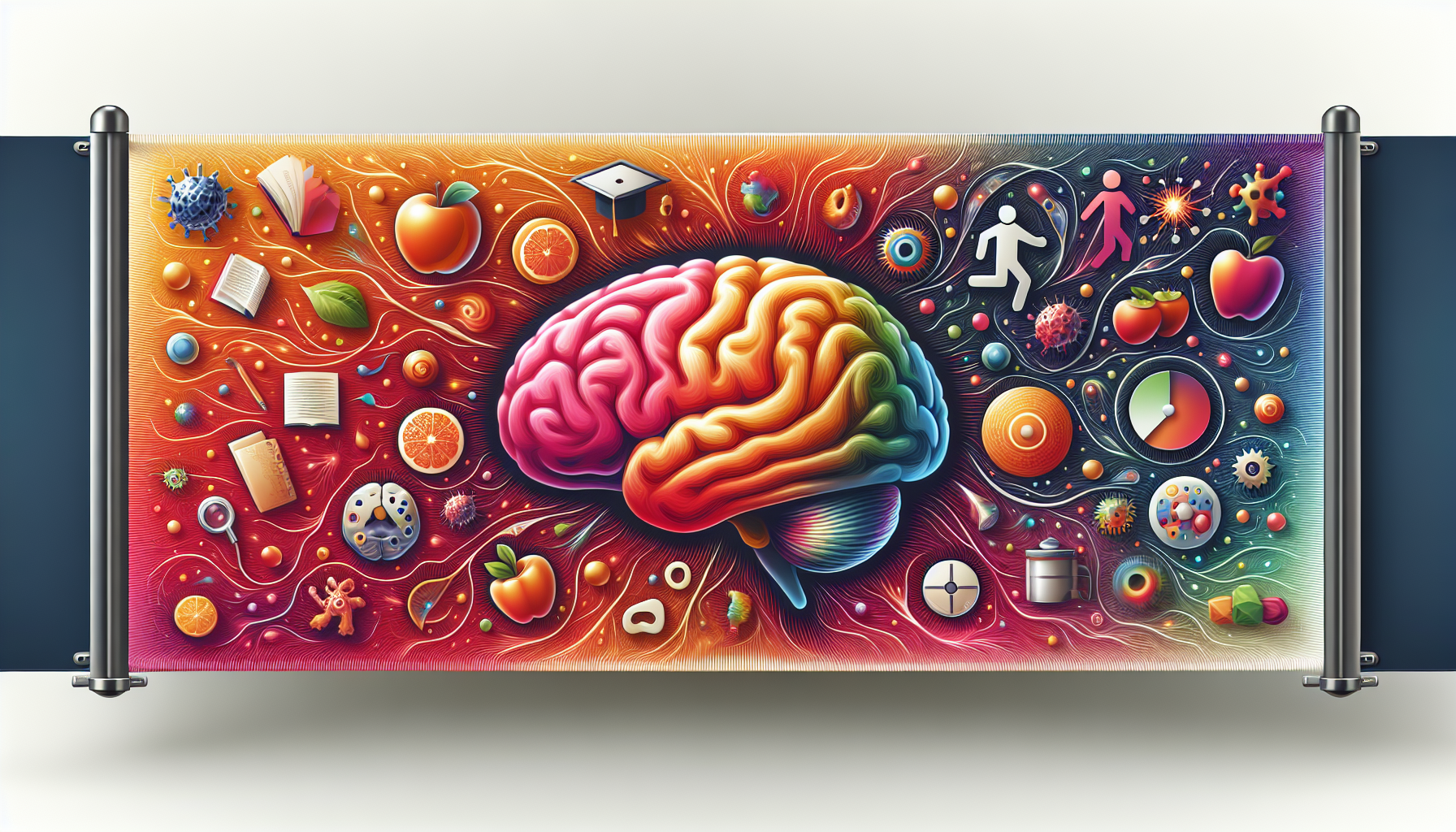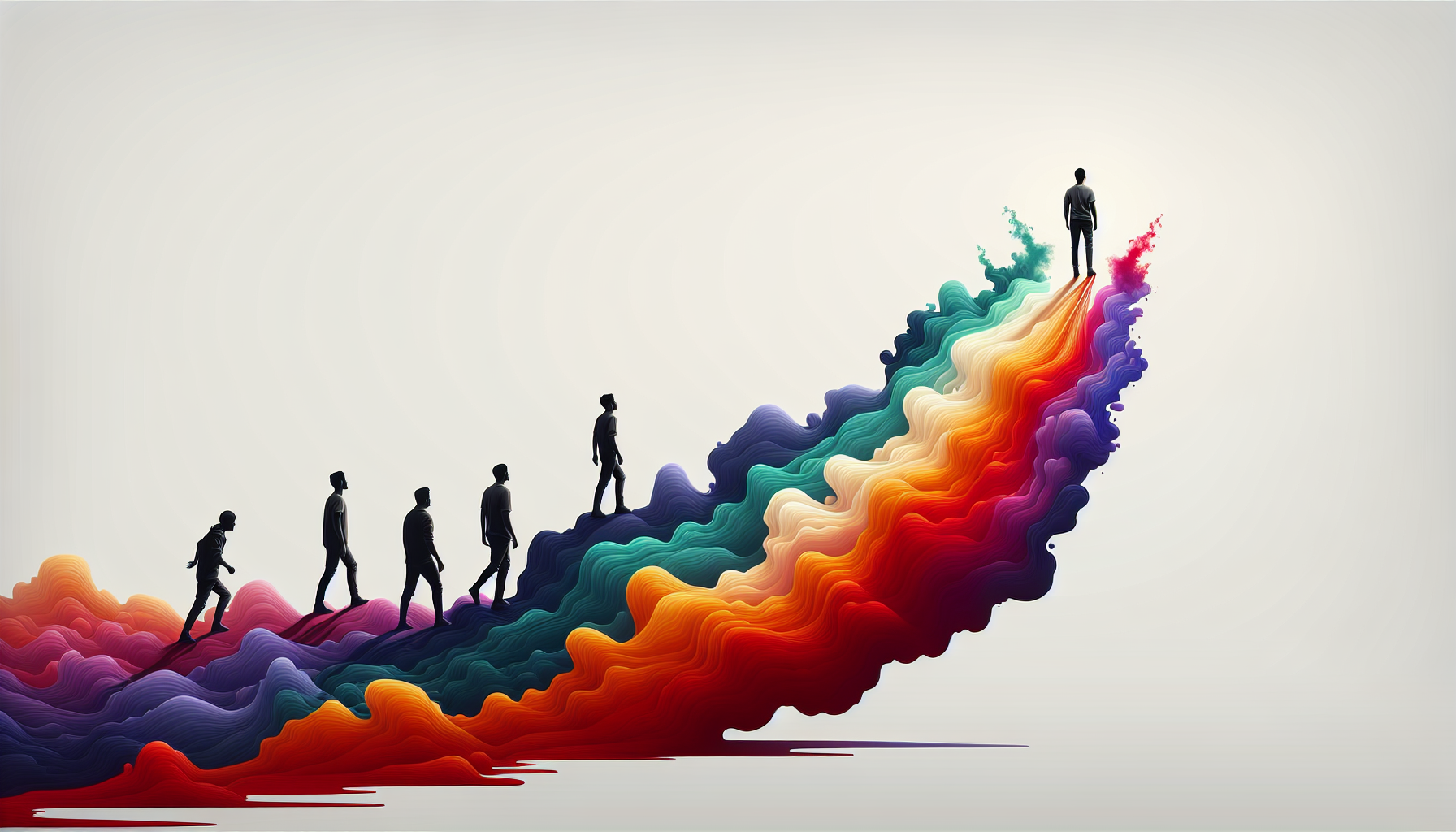On this page
Elon Musk's TED talk shares his vision for a 3D network of tunnels under Los Angeles to solve traffic congestion. He believes there is no limit to the number of levels of tunnels that can be created, and proposes solutions to reduce the traditionally high cost of tunneling. Musk humorously illustrates his goal for improving tunneling speed with a pet snail named Gary. He introduces his new company, The Boring Company, dedicated to this tunneling vision, and discusses the feasibility of running a Hyperloop in a tunnel over long distances. He also ties the tunneling project to his work with Tesla and shares his thoughts on the future of electric vehicles and autonomous cars.
Applied Learning to Developer Enablement
Elon Musk's vision of creating a 3D network of tunnels can be seen as an innovative solution to a problem (traffic congestion). Similarly, in software development, it's important to think outside the box and come up with innovative solutions to problems. Developers could learn from this by always seeking to improve their problem-solving skills and aiming to create efficient, scalable, and cost-effective software solutions. This could involve optimizing code, reducing complexity, and choosing the most effective data structures and algorithms for the task at hand.
Developer Checklist Refined
Autonomous Vehicles and Energy
Strategic Planning and Sustainability
Space Exploration and Development
Summary
Introduction and Vision for Tunnels Under LA
Elon Musk discusses his vision for a 3D network of tunnels under Los Angeles to alleviate traffic congestion. He describes traffic as one of the most 'soul-destroying' things and aims to create an efficient, high-speed tunnel network that can transport cars at speeds of up to 200 kilometers per hour. This would allow for travel times, such as from Westwood to LAX, to be as short as six minutes.
The Concept of Multi-level Tunnels
Musk explains that there is no limit to the number of levels of tunnels that can be created. He argues that we can go much deeper into the earth than we can go up, meaning that any level of urban congestion can be alleviated with a 3D tunnel network. He rebuts the idea that adding one layer of tunnels will simply get used up and lead to congestion again, by stating that an arbitrary number of tunnel levels can be created.
The Cost of Tunneling and Proposed Solutions
Musk acknowledges the traditionally high cost of tunneling, with an example of the LA subway extension costing about a billion dollars per mile. He proposes two main solutions to reduce this cost: reducing the tunnel diameter and enabling continuous tunneling. By shrinking the tunnel diameter from 26-28 feet to 12 feet, the tunneling cost can be reduced as it scales with cross-sectional area. Furthermore, designing machines to tunnel continuously without stopping for reinforcements can double efficiency. He believes these changes, along with increasing the power of tunneling machines, could lead to more than a tenfold improvement in cost efficiency.
Beating the Snail: A Measure of Success
Musk humorously illustrates his goal for improving tunneling speed with a pet snail named Gary. Currently, Gary is capable of moving 14 times faster than a tunnel-boring machine. Musk's victory would be to develop a tunneling system that can outpace Gary the snail.
Elon Musk's Perspective on Flying Cars
Elon Musk expresses his perspective on flying cars, expressing a preference for rockets and flying objects. However, he acknowledges the challenges associated with flying cars, such as noise and wind force. He also humorously notes the anxiety that could be induced by numerous flying cars overhead, raising concerns about potential falling parts.
Introduction to Hyperloop and Tunneling
Elon Musk introduces his vision for future cities, featuring extensive 3D networks of tunnels. He sees potential in applying these tunnels for the Hyperloop idea he proposed a few years ago. He mentions a Hyperloop test track built for a student competition and his ambition to potentially make it faster than the world's fastest bullet train.
Hyperloop in Tunnels and Tunneling Technology
Musk explains the feasibility of running a Hyperloop in a tunnel over long distances. He delves into the technicalities of tunneling technology, explaining that a well-designed tunnel capable of resisting the water table can automatically hold a vacuum, making it suitable for a Hyperloop. He believes there's no limit to the length of a tunnel for running a Hyperloop.
Tunnel Detection and The Boring Company
Musk discusses the undetectability of deep tunnels, explaining that vibrations from tunneling can be absorbed by the earth, making them imperceptible at certain depths. He introduces his new company, The Boring Company, which is dedicated to this tunneling vision, though he mentions it's currently a small, part-time endeavor.
Tunneling Project in Relation to Tesla and Autonomous Cars
Musk connects the tunneling project to his work with Tesla, suggesting that in a world of electric, self-driving cars, there could be more cars on the roads than there are now. He argues that shared autonomous cars could increase driving and potentially worsen traffic. He acknowledges the initial skepticism towards Tesla's focus on electric cars and how perceptions have changed over time.
Electrification Plans of Auto Manufacturers
Automakers globally are increasingly focusing on electric vehicles. Their level of commitment varies, with some planning a complete transition to electric vehicles and others only exploring the possibility. A few manufacturers are still considering fuel cells, but this is not expected to continue for much longer.
Elon Musk's Commitment to Tesla
Elon Musk plans to stay with Tesla for the foreseeable future. The company has several exciting projects in the pipeline, including the launch of the Model 3 and the unveiling of the Tesla Semi truck.
Autopilot in Tesla Vehicles
Tesla vehicles are equipped with an autopilot feature that utilizes cameras and GPS, without relying on LIDAR or radar. The system uses passive optical technology, similar to human vision, to navigate roads. The focus is on developing a vision neural net that can effectively handle various road conditions. Current Tesla cars have eight cameras but they are not yet capable of full autonomy.
Timeline for Full Autonomy
Musk believes that Tesla will be able to achieve full autonomy, allowing a car to travel from Los Angeles to New York without any human intervention, by the end of the current year. This capability will not be limited to a specific route, and the destination can be changed dynamically.
Safety and Reliability of Autonomous Driving
Achieving safe and reliable autonomous driving is a challenge. The goal is not to make the system perfect, but to make it so safe that the likelihood of a crash is extremely low. Musk believes that the technology will be ready for someone to safely sleep while the car drives within about two years.
Shared Autonomy Fleet
The concept of a shared autonomy fleet is discussed, where an individual can purchase a car and choose to use it exclusively or provide it as a service to others. This could be an Uber-like service to other people, earning the car owner money and potentially covering the cost of the car lease. The car owner can set conditions for its use, such as only by friends and family or only by highly rated drivers. The certainty that this will happen is affirmed, only the time frame is in question.
Tesla Semi-truck Reveal
A teaser shot of a Tesla Semi-truck is shown. The truck is described as a heavy-duty, long-range vehicle designed for high weight capacity loads. The truck is electric, and it is suggested that it can outperform any diesel semi in terms of torque. A prototype has already been test-driven, and it is noted that the truck handles nimbly despite its size.
Future of Housing and Transportation
A vision of the future is presented where houses are equipped with solar glass roofs and Powerwalls (battery storage units), and electric cars are the norm. The solar glass roof tiles are designed to look identical from street level, regardless of whether they contain a solar cell or not. The cost of a solar glass roof plus electricity is projected to be less than the cost of a traditional roof plus electricity, making it an economically sensible choice.
Introduction of Solar Roofs
The concept of solar roofs is being introduced, starting with two initial offerings and two more to be introduced next year. The long-term vision is that almost all houses will have a solar roof within a time scale of 40-50 years, given that a roof is typically replaced every 20-25 years. The prediction is that in about 15 years, it will be unusual for a roof not to have solar capabilities.
Solar Energy Potential for Homes
The potential for solar energy in residential settings is discussed. It is stated that most houses have enough sunlight exposure on their roofs to power all of their needs. The capacity for a house to go off-grid with solar power is dependent on its location and the size of the house relative to the roof area. However, most houses in the U.S. have enough roof area to power all the needs of the house.
Role of Lithium-ion Batteries in Solar Energy
The falling price of lithium-ion batteries is a key factor in the economics of solar-powered cars, semis, and houses. As Tesla has made a huge bet on lithium-ion batteries, it has built the world's largest manufacturing plant, the Gigafactory, to double the world's supply of these batteries. The Gigafactory, currently in production, is capable of producing a hundred gigawatt hours of batteries a year.
Building More Gigafactories
The plan to build more Gigafactories is discussed. It is estimated that about a hundred Gigafactories would be needed to transition the world away from fossil fuels. Tesla plans to announce locations for between two and four more Gigafactories later in the year to address the global market.
Contributions to Climate Change Discussions
The speaker's role in advising on climate change issues is clarified. Despite serving on two advisory councils, the speaker's contributions are limited to monthly meetings. However, the speaker has used these opportunities to argue in favor of immigration and climate change.
SpaceX and Mars
The development of reusable rockets by SpaceX is discussed. A video shows one of their rocket boosters returning from space, demonstrating the feasibility of reusable rockets.
Rocket Reusability and Successes
The conversation begins with the discussion of the successful reusability of rockets. The speaker emphasizes that for reusability to be relevant, it must be rapid and complete, likening it to the use of an aircraft or a car which are not sent back to their manufacturers between uses. The speaker mentions that they have successfully landed and re-flown rocket boosters eight or nine times.
The Scale of the New Rocket Design
The speaker details the scale of a newly designed rocket, comparing its thrust level to that of a 747 aircraft. The new rocket's thrust is equivalent to 120 747s with all engines blazing. The speaker also mentions that this new rocket design could carry a fully loaded 747, including passengers, cargo, and fuel, into orbit.
Interplanetary Transport System and Future Spacecrafts
The speaker introduces the Interplanetary Transport System, which is visualized as a large rocket capable of carrying many people. The speaker hopes that this system could be operational in eight to ten years. The speaker also predicts that future spacecrafts will be significantly larger, making current designs seem like rowboats in comparison.
Motivation for Building a City on Mars
The speaker expresses the desire to build a city on Mars with a million people within his lifetime. He believes that having an inspiring and appealing future is important, and without the prospect of becoming a multiplanet species, the future would be incredibly depressing.
Balancing Earth's Issues with Space Exploration
The speaker discusses the criticism of focusing on space exploration while there are urgent issues on Earth. He argues that he views the future in terms of probabilities and believes that sustainable energy is an inevitability. He sees the value in companies like Tesla in how they can accelerate the advent of sustainable energy.
Space-Faring Civilization is Not Inevitable
In contrast to sustainable energy, the speaker states that becoming a space-faring civilization is not inevitable. He emphasizes the importance of recognizing this and working towards making it a reality.
Decline in Space Exploration Progress
The speaker highlights the decline in space exploration progress. In 1969, humans were able to land on the moon. However, the subsequent Space Shuttle could only reach low Earth orbit. After the retirement of the Space Shuttle, the United States lost the capability to send anyone to orbit. This trend indicates that technological advancement is not inevitable, but requires hard work and innovation.
Misconception about Technology Improvement
The speaker addresses a common misconception that technology automatically improves over time. On the contrary, technology only advances if people work diligently to enhance it. If left unattended, it can even degrade. Historical examples include the Ancient Egyptians who built pyramids and the Romans who constructed aqueducts, but these civilizations eventually lost these skills.
Elon Musk's Dual Motivation
Elon Musk is noted for his unique dual motivation: the desire to contribute to humanity's long-term good and the desire to do something exciting. For instance, Tesla was created to promote sustainable energy through the production of exciting, high-performance electric cars. Similarly, the goal of SolarCity is to make solar energy more accessible by creating beautiful solar roofs.
Inspiring Humanity and Providing a Backup Plan
The speaker discusses Elon Musk's vision for Mars colonization. Musk believes that establishing a human presence on Mars serves a dual purpose: to act as a backup plan for humanity in case Earth becomes uninhabitable, and to inspire humanity by achieving something that was once considered impossible.
Elon Musk's Vision for the Future
Elon Musk clarifies that his goal is not to be a savior, but to imagine a future that does not make him sad. His innovations and ventures are driven by this vision. He is commended for dreaming big and pushing the boundaries of what is considered achievable, thus inspiring others to do the same.
FAQs
What is Elon Musk's vision for tunnels under Los Angeles? Elon Musk envisions a 3D network of tunnels under Los Angeles to alleviate traffic congestion. He aims to create an efficient, high-speed tunnel network that can transport cars at speeds of up to 200 kilometers per hour, reducing travel times significantly.
What is the concept of multi-level tunnels? The concept of multi-level tunnels is that there is no limit to the number of levels of tunnels that can be created. Elon Musk argues that we can go much deeper into the earth than we can go up, meaning that any level of urban congestion can be alleviated with a 3D tunnel network.
What are Elon Musk's proposed solutions to the high cost of tunneling? Musk proposes two main solutions to reduce the high cost of tunneling: reducing the tunnel diameter and enabling continuous tunneling. By shrinking the tunnel diameter, the tunneling cost can be reduced as it scales with cross-sectional area. Designing machines to tunnel continuously without stopping for reinforcements can also double efficiency.
What is Elon Musk's goal for improving tunneling speed? Musk's goal for improving tunneling speed is to develop a tunneling system that can outpace a pet snail named Gary, which is currently capable of moving 14 times faster than a tunnel-boring machine.
What is Elon Musk's perspective on flying cars? Elon Musk expresses a preference for rockets and flying objects over flying cars due to challenges such as noise and wind force. He also notes the anxiety that could be induced by numerous flying cars overhead, raising concerns about potential falling parts.
What is Elon Musk's vision for future cities and the Hyperloop? Elon Musk envisions future cities with extensive 3D networks of tunnels. He sees potential in applying these tunnels for the Hyperloop idea he proposed a few years ago, and mentions a Hyperloop test track built for a student competition and his ambition to potentially make it faster than the world's fastest bullet train.
What is the feasibility of running a Hyperloop in a tunnel over long distances? Musk explains that a well-designed tunnel capable of resisting the water table can automatically hold a vacuum, making it suitable for a Hyperloop. He believes there's no limit to the length of a tunnel for running a Hyperloop.
What is The Boring Company? The Boring Company is Elon Musk's new company dedicated to his vision of tunneling. It is currently a small, part-time endeavor.
How does the tunneling project relate to Tesla and autonomous cars? Musk suggests that in a world of electric, self-driving cars, there could be more cars on the roads than there are now. He argues that shared autonomous cars could increase driving and potentially worsen traffic.
What are the electrification plans of auto manufacturers? Automakers globally are increasingly focusing on electric vehicles. Their level of commitment varies, with some planning a complete transition to electric vehicles and others only exploring the possibility. A few manufacturers are still considering fuel cells, but this is not expected to continue for much longer.
What is Elon Musk's commitment to Tesla? Elon Musk plans to stay with Tesla for the foreseeable future. The company has several exciting projects in the pipeline, including the launch of the Model 3 and the unveiling of the Tesla Semi truck.
What is the autopilot feature in Tesla vehicles? Tesla vehicles are equipped with an autopilot feature that utilizes cameras and GPS, without relying on LIDAR or radar. The system uses passive optical technology, similar to human vision, to navigate roads. The focus is on developing a vision neural net that can effectively handle various road conditions.
What is the timeline for full autonomy according to Elon Musk? Elon Musk believes that Tesla will be able to achieve full autonomy, allowing a car to travel from Los Angeles to New York without any human intervention, by the end of the current year.
What is the goal for the safety and reliability of autonomous driving? The goal is not to make the system perfect, but to make it so safe that the likelihood of a crash is extremely low.
What is the concept of a shared autonomy fleet? The concept of a shared autonomy fleet is where an individual can purchase a car and choose to use it exclusively or provide it as a service to others.
What is the Tesla Semi-truck? The Tesla Semi-truck is a heavy-duty, long-range vehicle designed for high weight capacity loads. It is electric and can outperform any diesel semi in terms of torque.
What is Elon Musk's vision of the future of housing and transportation? A vision of the future is presented where houses are equipped with solar glass roofs and Powerwalls, and electric cars are the norm.
What is the concept of solar roofs? The concept of solar roofs is being introduced, with the long-term vision that almost all houses will have a solar roof within a time scale of 40-50 years.
What is the potential for solar energy in residential settings? Most houses have enough sunlight exposure on their roofs to power all of their needs. The capacity for a house to go off-grid with solar power is dependent on its location and the size of the house relative to the roof area.
What is the role of lithium-ion batteries in solar energy? The falling price of lithium-ion batteries is a key factor in the economics of solar-powered cars, semis, and houses.
What is the plan for building more Gigafactories? The plan to build more Gigafactories is discussed. It is estimated that about a hundred Gigafactories would be needed to transition the world away from fossil fuels.
What is the speaker's role in advising on climate change issues? Despite serving on two advisory councils, the speaker's contributions are limited to monthly meetings, where they argue in favor of immigration and climate change.
What is SpaceX's development in terms of rockets? The development of reusable rockets by SpaceX is discussed, with a video showing a rocket booster returning from space to demonstrate feasibility.
What is the importance of rocket reusability? For reusability to be relevant, it must be rapid and complete, similar to the use of an aircraft or a car which are not sent back to their manufacturers between uses.
What is the scale of the new rocket design? The scale of a newly designed rocket is detailed, comparing its thrust level to that of a 747 aircraft. The new rocket's thrust is equivalent to 120 747s with all engines at full power.
What is the Interplanetary Transport System? The Interplanetary Transport System is a large rocket capable of carrying many people, visualized as a part of future space exploration. The speaker hopes that this system could be operational in eight to ten years.
What is the speaker's motivation for building a city on Mars? The speaker expresses the desire to build a city on Mars with a million people within his lifetime. He believes that having an inspiring and appealing future is important and that becoming a multiplanet species can prevent the future from being incredibly depressing.
How does the speaker balance Earth's issues with space exploration? The speaker argues that he views the future in terms of probabilities and believes that sustainable energy is an inevitability. He sees the value in companies like Tesla in how they can accelerate the advent of sustainable energy.
Why does the speaker believe that becoming a space-faring civilization is not inevitable? The speaker emphasizes the importance of recognizing that becoming a space-faring civilization requires hard work and innovation. It is not an automatic outcome.
What does the speaker say about the decline in space exploration progress? The speaker highlights the decline in space exploration progress, noting that technological advancement is not inevitable, but requires hard work and innovation.
What misconception about technology improvement does the speaker address? The speaker addresses the misconception that technology automatically improves over time. He argues that technology only advances if people work diligently to enhance it and can even degrade if left unattended.
What is Elon Musk's dual motivation? Elon Musk is noted for his unique dual motivation: the desire to contribute to humanity's long-term good and the desire to do something exciting.
What is Elon Musk's vision for Mars colonization? Musk believes that establishing a human presence on Mars serves a dual purpose: to act as a backup plan for humanity in case Earth becomes uninhabitable, and to inspire humanity by achieving something that was once considered impossible.
What is Elon Musk's vision for the future? Elon Musk's goal is not to be a savior, but to imagine a future that does not make him sad. His innovations and ventures are driven by this vision. He is commended for dreaming big and pushing the boundaries of what is considered achievable, thus inspiring others to do the same.

